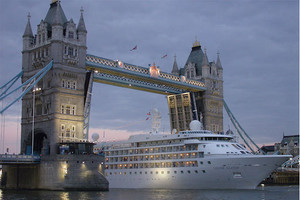
Just thinking about seasickness is enough to make you feel a tad queasy, but if you are planning to take a cruise, and you are unsure of your sea legs, there are plenty of remedies you can have on hand which can help you make it through the high seas. Just remember that most remedies need to be taken a few hours before you set sail, and not every remedy will work for everyone. And if you are taking any other medications, either over-the-counter or particularly prescription, check with your doctor before trying anything in case of a conflict.
Over-The-Counter Medications
In Australia, a common travel sickness remedy is Travacalm, which is available over-the-counter at most drug stores and pharmacies. It contains an antihistamine, which also has an anti-vomiting effect, but as a result it can cause drowsiness, and you will need to be wary of drinking too much alcohol while taking it.
Prescription Medications
Prescription options, which have to be obtained from a doctor, include Stemetil and Maxolon. Stemetil acts on the brain to correct chemical balances which may include the parts which control nausea and vomiting. Maxolon does a similar job, and acts on the stomach and upper intestine to increase muscle contractions for proper stomach emptying. Similar to the over-the-counter medications, you will need to watch your intake of alcohol.
Travel Sickness Patches
Another option is a travel sickness patch, which is worn behind the ear and looks like a small band-aid. These usually are effective for several days at a time and provide time-release doses of the drug, which makes them very effective for preventing nausea on longer cruises, but they can also have side effects including drowsiness and dry mouth. You will also need to be careful with alcohol. They are not available in Australia but you should be able to obtain them from the ship’s doctor on board.
Wrist Bands
These act on the wrists using a type of acupressure and some people swear by them. There is a point about two centimetres above the inside of your wrist, called the Nei-Kuan pressure point, where the wrist band applies pressure using a plastic bead or button. You will need to wear them all the time to prevent sea sickness, however.
Ginger
Ginger is arguably the most common herbal remedy for travel sickness in general, and for seasickness in particular. There are many options when it comes to taking it, which include swallowing capsules, eating crystalised ginger, and drinking pure ginger tea, all of which are readily available from supermarkets and health food stores. There aren’t really any significant side effects from taking ginger, except for occasional heartburn or an aftertaste in the mouth.
Green Apples
These are a very old remedy used by sailors in days gone by, and similar to ginger. You may notice that many cruise ships often have bowls of them in reception and at the buffet, or you can ask for them through room service.
Seeing The Ship’s Doctor
If your remedies don’t work and you become sea sick, call the ship's doctor and claim the bill on your insurance. Beyond issuing a seasickness patch, the likely remedy he will administer is an injection to stop the vomiting, and help you relax and sleep.
- By:
- Joanna Hall






